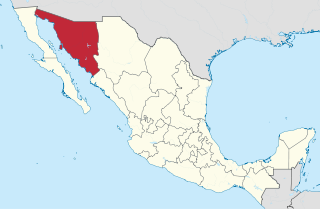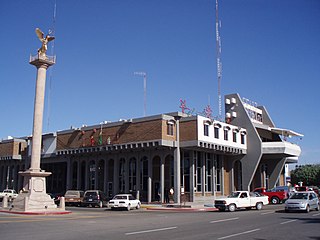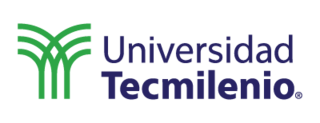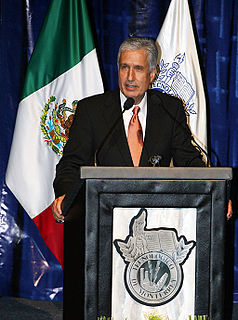
Sonora, officially Estado Libre y Soberano de Sonora, is one of the 31 states which, along with Mexico City, comprise the Federal Entities of Mexico. The state is divided into 72 municipalities; the capital city of which being Hermosillo, located in the center of the state. Other large cities include Ciudad Obregón, Nogales, San Luis Río Colorado, and Navojoa.

Hermosillo, formerly called Pitic, is a city located in the center of the northwestern Mexican state of Sonora. It is the municipal seat of the Hermosillo municipality, the state's capital and largest city, as well as the primary economic center for the state and the region. As of 2020, the city has a population of 936,263, making it the 18th largest city in Mexico. The recent increase in the city's population is due to expanded industrialization, especially within the automotive industry.

Torreón is a city and seat of Torreón Municipality in the Mexican state of Coahuila. As of 2021, the city's population was 735,340. The metropolitan population as of 2015 was 1,497,734, making it the ninth-biggest metropolitan area in the country and the largest metropolitan area in the state of Coahuila, as well as one of Mexico's most important economic and industrial centers. The cities of Torreón; Gómez Palacio, Durango; Lerdo, Durango; Matamoros; Francisco I. Madero; San Pedro; Bermejillo, Durango; and Tlahualilo, Durango form the area of La Laguna or the Comarca Lagunera, a basin within the Chihuahuan Desert.

Culiacán, officially Culiacán Rosales, is a city in northwestern Mexico, the capital and largest city of both the Culiacán Municipality and the state of Sinaloa. The city was founded on 29 September 1531, by the Spanish conquerors Lázaro de Cebreros and Nuño Beltrán de Guzmán under the name of "Villa de San Miguel", referring to its patron saint, Michael the Archangel.

Instituto Tecnológico y de Estudios Superiores de Monterrey (ITESM), also known as Tecnológico de Monterrey or just Tec, is a secular and coeducational private university based in Monterrey, Mexico, which has grown to include 35 campuses throughout the country. One of only 45 universities in the World to be ranked with 5 QS Stars, it is widely recognized as one of the most prestigious universities in Latin America.

Navojoa is the fifth-largest city in the northern Mexican state of Sonora and is situated in the southern part of the state. The city is the administrative seat of Navojoa Municipality, located in the Mayo River Valley.

Ciudad Obregón is a city in southern Sonora. It is the state's second largest city after Hermosillo and serves as the municipal seat of Cajeme, as of 2020, the city has a population of 436,484. Ciudad Obregón is 530 km (330 mi) south of the state's northern border.

The Estadio Tecnológico was a multi-purpose stadium located in Monterrey, Nuevo León, Mexico, located on the campus of the Monterrey Institute of Technology and Higher Education (ITESM). It hosted football and American football games during its 67-year existence, from 1950 to 2017.
Ricardo Legorreta Vilchis was a Mexican architect. He was a prolific designer of private houses, public buildings and master plans in Mexico, the United States of America and some other countries.

Dr. María de Lourdes Dieck-Assad is a Mexican economist who has held positions in academia, an international organization, government and business, including professorships in the United States and Mexico as well as serving as Mexico's ambassador to Belgium, Luxembourg and the institutions of the European Union from 2004 to 2007. For her service in this capacity, she was awarded the Grand Cross of the Order of the Crown of Belgium. She attended the Monterrey Institute of Technology and Higher Education from 1971 to 1975, graduating with a bachelor's in economics. She received her master's in 1976 from Vanderbilt University and her doctorate in the same field from the University of Texas in Austin in 1983 with a dissertation entitled “The effect of economic shocks under different monetary procedures and different economic structures,” which she wrote as an intern at the Brookings Institution. She has said that she wanted to work to make an impact on Mexico since she was studying as an undergraduate, mostly in economic and social issues. Her husband is economist Pedro Quintanilla Gómez-Noriega. They lived in Austin, Texas for five years, where they both pursued doctoral studies in Economics. Then they went to live in Washington, DC where both worked. They returned to Mexico in 1992. When an opportunity came for Dieck-Assad to represent Mexico in Europe, she received the full support of her husband and her three children, who were already in high school and college.

The Ignacio A. Santos School of Medicine is the medical school division of the Monterrey Institute of Technology and Higher Education (ITESM). Established in 1978 in Monterrey, Mexico.
Digital Libraries are virtual spaces that mediate access, use and generation of knowledge.

The Cervantine Library Spanish: Biblioteca Cervantina is a library located on the main campus of Tecnológico de Monterrey, in the city of Monterrey, N. L, México.The library has about 130,000 items in its collection, with its holdings on Mexican history and culture ranked second in the Americas. It also houses series of photographs covering the history of Mexico and Monterrey during the 19th and 20th centuries.

The Universidad Tecmilenio (UTM) is a private institution of higher education. The institution is part of Monterrey Institute of Technology and Higher Education Tecmilenio University ITESM system comprises 40 locations and an online campus. For-profit schools that have entered the country in recent years, the university serves some 21,000 students on its own at high school, undergraduate and postgraduate level, frequently through distance learning. Like most schools it now follows a semester model that replaced the original four-month terms.

David Noel Ramírez Padilla was the dean of the Monterrey Institute of Technology and Higher Education university system (ITESM) which has thirty one campuses in various parts of Mexico. Ramirez's education and career as both an educator and administrator have all been around this university system, culminating to his former position beginning in January 2011. In addition, he has authored eight books, numerous articles, served as keynote speaker at various conferences and advised outside institutions on matters regarding accounting, finance and human development.

Carlos Manuel Urzúa Macías is a Mexican Professor of Economics at the Tecnológico de Monterrey, Mexico City and Santa Fe campuses. He is a National Researcher and a member of the Mexican Academy of Science. He served as the Secretary of Finance for the Mexico City government from 2000 to 2003. He is also an award-winning poet.

María Isabel Studer Noguez is Director of Alianza University of California-Mexico. She was Director for Strategic Initiatives for Latin America and Executive Director for Mexico and Northern Central America of The Nature Conservancy. She was Director General for International Economic Cooperation at the Mexican Agency for International Cooperation, where she launched the Partnership for Sustainability with the aim of engaging the private sector in developing public-private projects around the 2030 Sustainable Development Agenda. For almost a decade, she was a professor and researcher in international relations at the Monterrey Institute of Technology and Higher Education, principally working as the director of the Instituto Global para la Sostenibilidad (IGS), formerly the Centro de Diálogo y Análysis sobre América del Norte (CEDAN). She began her academic career working in international relations and has held positions in both Mexico and the United States teaching, researching, advising and writing on topics related to international relations, especially in North America, business and environmental issues. Her publications include books, scholarly articles as well as articles and columns for various media.
















